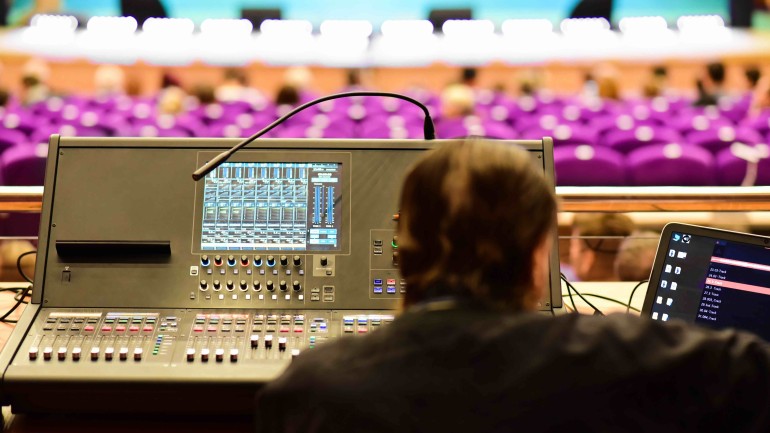
The advent of Artificial Intelligence (AI) has brought transformative changes across various industries, and the field of video and film post-production is no exception. AI technologies are revolutionizing how editors, visual effects artists, and sound designers approach their work, offering new tools that enhance efficiency, creativity, and precision. This article explores the profound impacts of AI on video and film post-production, highlighting key advancements, benefits, and the evolving role of human professionals in this tech-driven landscape.
Key Advancements in AI for Post-Production
Automated Editing
- Scene Detection and Assembly: AI algorithms can analyze raw footage and automatically detect different scenes, making it easier for editors to organize and assemble their projects. Tools like Adobe Premiere Pro’s Scene Edit Detection use AI to identify cut points in a video, streamlining the initial editing process.
- Rough Cuts: AI-powered editing software can create rough cuts by selecting the best takes and arranging them according to predefined criteria or stylistic preferences. This significantly reduces the time spent on initial edits, allowing editors to focus on refining and polishing the final product.
Enhanced Visual Effects (VFX)
- Object Removal and Replacement: AI tools can efficiently remove unwanted objects or replace elements in a scene. For instance, Adobe After Effects’ Content-Aware Fill uses AI to intelligently fill in missing pixels after an object is removed, creating seamless visuals.
- Motion Tracking: Advanced AI algorithms improve the accuracy and efficiency of motion tracking, a crucial task in VFX. AI can track objects and characters with greater precision, even in complex and fast-moving scenes, enhancing the realism of effects like compositing and 3D rendering.
Color Grading and Correction
- Automated Color Matching: AI can analyze the color profiles of different clips and automatically apply consistent color grading across a project. This ensures visual coherence and saves colorists significant time in matching tones and hues manually.
- Real-Time Adjustments: AI-driven tools offer real-time color correction, enabling editors to see the immediate impact of changes and make more informed decisions. Programs like DaVinci Resolve use AI to suggest optimal adjustments based on the content of each frame.
Audio Processing
- Noise Reduction and Sound Enhancement: AI algorithms can effectively reduce background noise, enhance dialogue clarity, and balance sound levels. Tools like iZotope’s RX suite leverage AI to clean up audio tracks with minimal manual intervention.
- Automated Sound Design: AI can generate sound effects and background scores that match the mood and tone of a scene. This capability aids sound designers in creating immersive audio landscapes with less effort and experimentation.
Facial Recognition and Deepfake Technology
- Facial Editing and Replacement: AI-powered facial recognition can be used to edit facial expressions, replace actors’ faces, or even create digital doubles for stunts and reshoots. This technology enhances the flexibility and safety of film production.
- Deepfakes: While controversial, deepfake technology offers creative possibilities for filmmakers, such as de-aging actors or bringing deceased performers back to the screen. Ethical considerations and legal frameworks are essential to guide the responsible use of this technology.
Benefits of AI in Post-Production
Increased Efficiency
- AI tools automate time-consuming tasks, allowing post-production teams to complete projects faster and more efficiently. This acceleration is particularly beneficial in fast-paced environments like news media and advertising.
Enhanced Creativity
- By handling repetitive and technical tasks, AI frees up creative professionals to focus on more innovative and artistic aspects of their work. Editors and artists can experiment with new techniques and styles, pushing the boundaries of visual storytelling.
Cost Reduction
- Automation and improved efficiency lead to cost savings in post-production. Smaller teams can accomplish more with the aid of AI, making high-quality production accessible to independent filmmakers and smaller studios.
Improved Quality
- AI-driven tools offer higher precision in tasks like color grading, motion tracking, and audio processing, resulting in superior final outputs. Consistent quality control and real-time feedback enhance the overall production value.
Challenges and Considerations
Ethical and Legal Issues
- The use of AI, particularly in areas like deepfakes and facial recognition, raises ethical and legal concerns. Ensuring consent, protecting privacy, and preventing misuse are critical challenges that the industry must address.
Job Displacement
- The automation of certain tasks may lead to concerns about job displacement for professionals in post-production. However, AI is also creating new roles and opportunities that require human oversight, creativity, and ethical judgment.
Technical Limitations
- While AI tools are powerful, they are not infallible. Technical limitations and the need for human intervention to refine AI-generated outputs mean that skilled professionals remain essential in the post-production process.
The Evolving Role of Human Professionals
As AI continues to integrate into post-production workflows, the role of human professionals is evolving. Editors, visual effects artists, and sound designers are increasingly becoming managers of AI tools, overseeing automated processes and adding the human touch that machines cannot replicate. The need for creativity, storytelling, and ethical decision-making ensures that human expertise remains at the core of video and film production.
Artificial Intelligence is significantly reshaping the landscape of video and film post-production, offering tools that enhance efficiency, creativity, and quality. While AI introduces challenges related to ethics, job displacement, and technical limitations, it also opens new possibilities for innovation and artistic expression. By embracing AI and adapting to its capabilities, post-production professionals can harness the power of technology to elevate their work and push the boundaries of visual storytelling.



